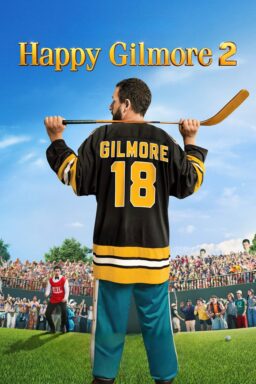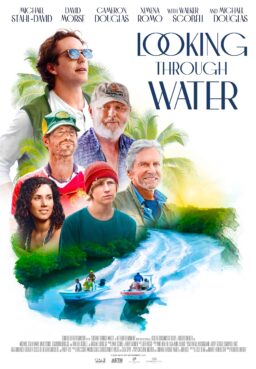Steven Spielberg celebrates his 50th birthday today. If he never directed another film, his place in movie history would be secure. It is likely that when all of the movies of the 20th century are seen at a great distance in the future – as if through the wrong end of a telescope – his best will be in the handful that endure and are remembered.
No other director has been more successful at the box office. Few other directors have placed more titles on various lists of the greatest films. How many other directors have bridged the gap between popular and critical success? Not many; one thinks of Chaplin and Keaton, Ford and Hitchcock, Huston and de Mille, and although the list could go on, the important thing is to establish the company that Spielberg finds himself in.
Now he owns his own studio, DreamWorks. A few other directors have grown so powerful that they could call their own shots: in the silent days, Griffith, Chaplin, de Mille and Rex Ingram. Since then, not many, and those who have founded studios, like Francis Coppola, have lived to regret their entry into the world of finance. But Spielberg’s success has been so consistent for so many years that even the mysteries of money (in some ways, so much more perplexing than the challenge of making a good film) seem open to him.
Consider some of his titles – Spielberg has made a dozen films known to virtually everyone: “Jaws,” “Close Encounters of the Third Kind,” “E.T. The Extra-Terrestrial,” “Raiders of the Lost Ark,” “Indiana Jones and the Temple of Doom,” “Indiana Jones and the Last Crusade,” “The Color Purple,” the two “Jurassic Parks,” and his 1993 Oscar winner for best picture, “Schindler's List.” Consider his current release, “Amistad,” concerning a trial about the moral and legal basis of slavery; he has used his success to buy the independence to make films that might not otherwise seem bankable.
If Spielberg had never directed a single film, however, he would still qualify as one of Hollywood’s most successful producers. Look at these titles: “Who Framed Roger Rabbit,” the three “Back to the Future” movies, “An American Tail,” “Gremlins,” “Twister” and many more. Yes, he has had failures (“1941” (1979), “Always,” “Hook“) but more often than not when Spielberg makes a movie, it finds one of the year’s largest audiences.
To make a good movie is very difficult. To make a popular movie is not easy. To make both, time after time, is the holy grail which Hollywood seeks with the same fervor that Indy Jones devoted to the ark of the covenant. Talking to Spielberg over the years, and particularly during a four- hour conversation in the spring of 1996, I got the feeling that his success is based on his ability to stay in touch with the sense of wonder he had as a teenager – about the world, and about movies.
“I’m greedy about trying to please as many people, all in the same tent, at the same time,” he told me. “I’ve just always wanted to please, more than I’ve wanted to create controversy and exclude people. And yet, when I made ‘E.T.,’ I really thought I was making it, not for everybody in the world, but for kids. I actually told George Lucas that parents would drop their kids off at ‘E.T.’ And the parents would go off and see another movie playing a block away.”
And yet he made a movie that more people have seen, perhaps, than any other. What deeper need did it fill than simple entertainment? Why does the story of a little boy and a goofy-looking extraterrestrial make people cry who never cry at the movies?
“From the very beginning,” Spielberg said, ” ‘E.T.’ was a movie about my childhood – about my parents’ divorce, although people haven’t often seen that it’s about divorce. My parents split up when I was 15 or 16 years old, and I needed a special friend, and had to use my imagination to take me to places that felt good – that helped me move beyond the problems my parents were having, and that ended our family as a whole. And thinking about that time, I thought, an extraterrestrial character would be the perfect springboard to purge the pain of your parents’ splitting up.”
It’s that deeper impulse, that need, that operates under the surface of “E.T.,” making it more emotionally complex than the story itself might suggest. And in the third Indiana Jones movie, there’s that bond between Indy (Harrison Ford) and his father (Sean Connery). In “Close Encounters,” the hope that alien visitors might be benign, not fearsome as they always were in science-fiction movies. And in “The Color Purple,” again the impulse to heal a broken family.
Spielberg may begin with a promising idea, but in his best films, he doesn’t proceed with it unless there is also a connection to his heart. That may be why his Holocaust film, “Schindler’s List,” is not only about horror, but about help, about man’s better nature even in the worst times.
Spielberg told me that he got into the movies by sneaking onto the lot at Universal Studios. He’d buy a ticket for the tour bus, jump off the bus and hang around. After a while, the guards had seen him so often (always dressed in his bar mitzvah suit, not T-shirt and jeans, so that he didn’t look so much like a kid), they waved him through.
By then he had already made a lot of movies. His first involved his Lionel train set. “The trains went around and around, and after a while, that got boring, and I had this 8-mm. camera, and I staged a train wreck and filmed it. That was hard on the trains, but then I could cut the film a lot of different ways, and look at it over and over again.”
And what boy wouldn’t rather make a movie than have a train set?











